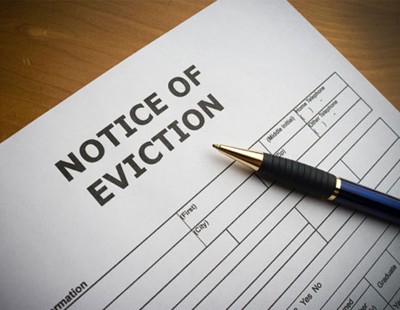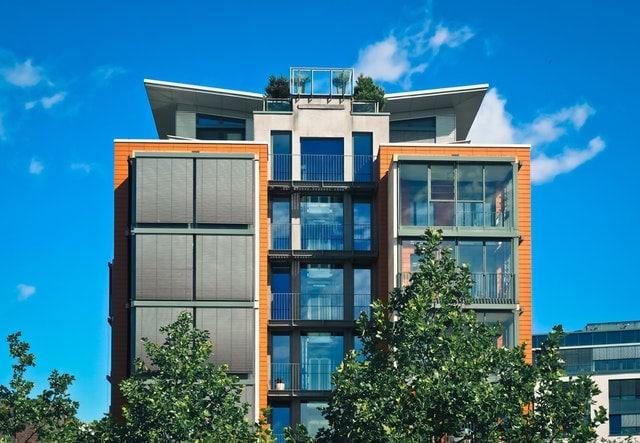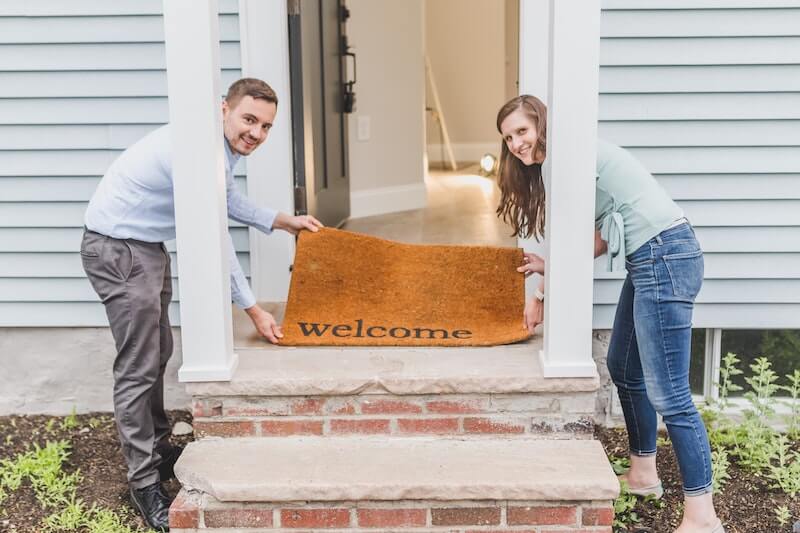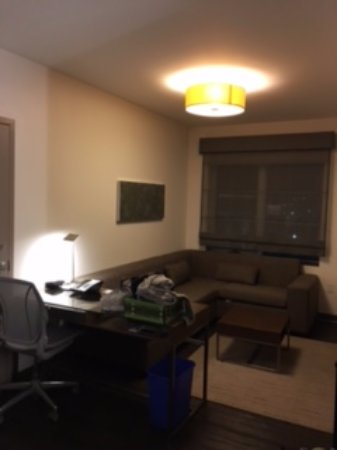What happens when you get evicted?
Eviction is the removal of a tenant from rental property by the landlord. In some jurisdictions, it may also involve the removal of persons from premises that were foreclosed by a mortgage.
When you are being evicted it can sometimes be called seeking possession.
It is important to remember that you may be able to stop or delay eviction and advice for this can be provided through Citizens Advice or Shelter.
If your case is rushed to court you may be able to gain help from an advisor within the court perimeters.
Before evicting you, there are a number of steps that a landlord, council or housing association needs to go through (it is important to educate yourself however as these can change in certain circumstances and depending on certain types of tenancy). The basic steps before eviction are as follows:
- You will receive a written notice that the council or housing association plans to evict you
- If an agreement cannot be reached between the tenant and the organisation a court order for the purpose of possession can be put into place
- The court will then decide when you can be evicted
- If you don’t leave upon these notices, the bailiffs can forcibly remove you and your belongings
Section 21 Eviction Process
and-section-8-notices">A section 21 notice is the form your landlord must give you to start the process to end your shorthand tenancy. It gives you the notice to leave your home, but it is legal for you to stay in your home after it expires.
Your Landlord gets a possession order
If your and-money/rent-arrears/eviction-for-rent-arrears/">landlord wishes to evict you they will need to get a possession order from a court
If you are a private tenant with an assured shorthand tenancy, your landlord may have been granted a possession order without the need for a court hearing. You will be told to leave the property no longer than 14 days after the order is granted, although it may be possible to ask for this date to be delayed under certain circumstances. There are three main types of possession order that your landlord has the potential to be granted:
- An outright possession order
- This will be issued if you are unable to convince the judge that you can keep up your rent payments and pay back what you owe. The possession order will state that you have to leave the property by a certain date. If you do not leave by this date your landlord will apply for a warrant of possession.
- A suspended possession order
- A suspended possession order means that you are allowed to stay in your home as long as you keep up your rent payments and give back what you owe. If you do not stand by this arrangement then your landlord can go to the court and apply for a warrant of possession.
- A postponed possession order
- A postponed possession orders similar to a suspended possession order.
- It essentially means that you are allowed to stay in your home as long as you keep up the rent payments and pay back what you owe. If you do not stick to this arrangement then they will go through another procedure to evict you
If you are in the process of buying a property but do not have time to wait for a mortgage to clear, the solution may be a bridging loan. It is a loan which acts to "bridge the gap" between you and the mortgage coming in.
Buying vs renting a property
Buying vs renting a property
Making the decision to buy or rent a property is never easy. There are pluses and minuses to both, as it can depend on your own personal and financial circumstances as to which is more preferable. For example, whilst the price of buying a home in England has risen in the past decade, so have rents across the county too. We explore the advantages of both buying and renting a property in the UK.
Advantages of buying a property
- You are able to have the freedom to do as you please if you have bought a property in terms of decorating the property, or if you choose to carry out a renovation project. If you buy a house, then you have the freedom to make home improvements that you wouldn't be able to carry out if you were renting a flat or house. This also is the case when it comes to having a pet, with many landlords usually extremely hesitant for tenants to own a cat or dog, and if you have a pet without getting permission it can sometimes even lead to eviction (or at least a higher deposit to pay when moving in)
- It is an investment for the future, which isn't the case when it comes to renting. Many people are put off renting due to this very fact, as it can be perceived as money going down the drain
- You can invest further in your own property, for example by considering home improvement loans, which can be used to increase the value of the property (find out more here)
- You have the potential to buy-to-let the property, meaning you can have an additional money earner through rental income coming in each month. If using the property as a buy-to-let investment property, it may be possible to acquire a second charge mortgage on the property
- The house may accumulate in value, meaning that you could end up making a fortune in years to come which could allow you to buy a bigger and better home, or to help you in your retirement years
It is important to keep in mind that you need to make sure that it is possible that you can afford to buy in the first place, as it isn't just the deposit you will need to take into account when it comes to costs. There are a number of costs you need to consider such as:
- Stamp duty
- Legal fees when exchanging contracts
- Monthly bills - phone bills, electric, gas
- Removal car costs
- Maintenance if anything breaks down - such as boilers or a leaking roof
- Survey costs
- Interest rates on mortgage repayments
- Estate agency costs
Advantages of renting a property
- As you are signed up to a fixed contract when you rent a flat or a house, it means you are not permanently committed to staying in the property for a long period of time. This can be preferable if you are wanting to try out living in a certain area for only a short amount of time, or if you are considering moving to another city or country in the not too distant future, allowing you, therefore, to be flexible when it comes to your plans.
- Renting a property also gives you the option of being able to leave reasonably quickly, and you will not have to worry about being tied into a costly mortgage should you not want to remain in the house.
- Renting provides greater flexibility than if you had bought a property. If you want to take up a promotion, your living situation is no longer tenable, or you anticipate that soon you will have less money than you did before, you can look for somewhere cheaper to rent, which would be far less stressful to sort out then trying to get out of mortgage arrangements. You should be able to afford your rent, but you can always top this up with loans to rent, if you need help to see you through for a few months.
- Deciding to rent a property can give you the chance to live in a city you've always dreamed of, but couldn’t otherwise afford to live in if the only option was buying a house as its too expensive
- The upfront costs of renting a property are far less (though still considerable) than if you bought somewhere in the UK. Many people have to spend months, if not years trying to save for a deposit for buying (it usually equates to around 20% of the property's market value, or 5% if on the Help to Buy scheme). Renting means you can decide to move into somewhere new at a far quicker rate.
How to Get Your House Ready for Viewings
As we all know, when it comes to selling your home, first impressions can make or break the sale. When you are selling your house, you only have one chance to make that first impression so it is important to get it right. Thus, it is important to get your house ready for viewings.
Many buyers desire a home which is not going be high maintenance and have as little damage to it as possible so they do not have to carry out much renovation. In addition, the presentation of the property is a key form of marketing – it allows the potential buyer to see themselves in that environment and buy into the “lifestyle” you are offering. Obviously then, the more prepared you are with the presentation of your home which is up for sale, the more chance you have of it being snapped up quicker – so much so that the buyers may need to take out a bridging loan!
There are several ways which sellers often fail to take advantage of very simple ways by which you can totally transform the presentation of your home in order to sell it quicker and for its highest value. Therefore, so you do not make the same error, we have put together some tips on how to ensure your home which is up for sale is presented beautifully and looks the best it can for the viewings:
- Fix the exterior appearance
- Declutter
- Promote the best room

Fix the Exterior Appearance
The first thing any potential buyers will see is the outside of your house. Make sure your front garden is well-kept; a mowed lawn, trimmed hedges, fresh follower baskets, a swept pathway and the weeds pulled out of the grass, etc. A well-presented front garden is inviting and from the second someone lays eyes on the property, they will feel as though it is somewhere they would feel comfortable.
The roof tiles should be cleaned and updated if need be. Cracked, damaged or missing roof title, if visible, should be investigating and put right before your house starts with the viewings.
Front porches alone add value to your home, but a well-presented one will make the property all the more desirable from the outside. Similarly, window and door frames should be cleaned and re-painted and glossed if necessary. An appealing entrance is vital when inviting people into your home who are potentially going to purchase it.
Declutter
If you are moving out, decluttering will not only help you sell your home but it will also make your life a lot easier in the moving process and in the long-term.
To declutter your home best, start by making a list. It makes sense to split the list into different rooms and along the way, decipher what you believe needs to go in the bin or what could be given away to a friend or even to someone less fortunate than yourself by sending it to the charity shop.
Give yourself a timeframe and you can work through the list – perhaps one room at a time over a number of days. It is advisable to start with the hallway as this should be a priority since it is the place people will first walk into. With the hall, think space and functionality.
Promote the Best Room
It is up to you to decide what you believe to be the selling room of your home. In most cases, this is the kitchen or a reception room.
Whilst it is not always essential to redecorate these rooms in any capacity, prioritising the cleanliness and presentation of them is essential as they are potentially your major selling point.
In your best room, as well as the rest of the house if it is within budget, you should aim to remove anything which may cause a potential buyer to doubt the property. This could be damp patches, cracks in the walls or ceiling, peeling wallpaper etc. To fix these, it is typically relatively inexpensive and in all honesty, worth the small investment since they could easier put a potential buyer off making an offer on your home. Any problems with the property will mean you fall victim to the potential buyer’s surveyor who will use these as a way to negotiate the asking price down further than you’d ideally want.
What to Consider When Buying Overseas
Buying overseas can be a very worthwhile investment, as long as you inform yourself thoroughly on what it takes to buy and own a property on foreign land. Here's what you need to consider before investing in a property abroad.
Arranging an Overseas Mortgage
If you are looking to get a mortgage on a home overseas, you can arrange this either with a UK bank or an international lender. Generally, UK banks will only enable you to get a mortgage out on a foreign property if they have branches or offices in the country which it is situated in.
For this reason, it is usually easier to get a UK mortgage on a property in Europe than it is if you were looking to buy further across the globe.
Alternatively, you may use a foreign mortgage broker to fund your overseas mortgage. When borrowing in a foreign currency or using a multi currency business account, you must remember that you will be subject to fluctuating exchange rates and charges.
Mortgage rates will differ from country to country; do not assume you will be operating within the remits of UK prices. As a further note, some countries require a larger deposit than typical UK requirements to be paid upfront when purchasing a property. You may be expected to pay a deposit as large as 40% of the property price.
Buying Overseas for a Holiday Home
Many Brits buy second homes abroad as a place to retreat and relax in the summer months. Holiday homes are generally considered a luxury, but they can also prove to be very lucrative. Many buyers will rent out their holiday homes when their properties are not in use, such that they can avoid losing money on expenses throughout the year.
With holiday hosting homes such as Airbnb being so popular today, it has never been a better time to invest in a holiday home.
When considering buying overseas for a holiday home, it is important to consider the following:
- how much use will the home get?
- is it in an area that might attract holiday rentals?
- how expensive will it be to maintain the home?
If you are likely to be able to travel to your holiday home multiple times a year, it will be far more worth your while than if you are merely using it as a one-time-a-year retreat. In any case, it is best to rent it to holidaymakers whenever possible, so you are not paying for empty space.
Buying Overseas for Long-Term Investment
You may be tempted to buy in a country or area where housing prices have taken a significant dip, but it can prove to be very risky long-term if you buy a property within a volatile market.
If you are thinking of buying overseas to go on to sell the property, you need to be careful to time your sale well - only sell the home when you have maximised the equity within it in order to make a decent profit.
You can increase the amount of equity in a home by renovating it, making it far more valuable on the housing market. Overseas properties in hot climates may be easier to sell if you add luxuries such as a pool, a hot tub, or balconies and terraces. Once the sale is made, you can no longer make any further profits from that property.
If you are investing in an overseas home as a rental property, you must consider what it takes to keep a property in good order for tenants. Maintenance fees will apply, and there are many responsibilities involved in being a landlord.
You must be aware of the average rental prices for properties of that kind in that area if you want to avoid either being ripped-off or not being able to attract tenants. You will likely want to consider advertising the property in local estate agents, which will involve costs to consider.
Any profits derived from your overseas property through renting it out will require the payment of income tax. Rental income is taxed differently in different countries - it is important that you become clued up about the mechanisms of taxation in the region you are buying in, and how those mechanisms relate to overseas buyers.
How to Finance Buying Overseas
Many overseas buyers will either use their savings to purchase a second home abroad or go down the route of remortgaging their current UK home to fund the investment of buying overseas.
If you do not want to remortgage your home, but need to release funds to pay for your overseas investment, you may consider getting a Second Charge Loan.
Second Charge Loans enable you to release equity on your existing mortgage without having to remortgage your current home. It is a type of second mortgage, which becomes second priority to your original mortgage when it comes to repayments.
Second Charge Loans can be quick and viable loans products to fund buying overseas.
Ways to Improve the Exterior of Your Home
If you are renovating a property through a construction or development finance lender, making the house look good from the outside is so essential. Whether you plan to sell it for a higher value or rent it out to tenants, you want the property to look appealing for any potential residents.
If you are looking to improve what your house looks like from the outside, whether that be adding a bit of colour, making some more drastic alterations or to just generally spruce up the front of your house, we have the perfect ways by which you can achieve you dream looking home to majorly improve your curb appeal. We have chosen things which we believe to be budget friendly, which is always great, especially when actively adding value to your home:
- Refinish your front door
- Improve the hardware of your front door
- Window boxes
- Create a pathway
- Re-paint your home
- Keep the garden maintained
- Improve or add to your porch
Refinish your front door

Your front door has a lot to answer for when it comes to the appearance of your house. If your front door is old, outdated, dull or the paint is chipped, you can easily make a huge improve to your whole house just by fixing it up. You can brighten up the exterior of your home by choosing a bright colour, this is sure to be the perfect welcome for any guests, passersby and for the family after a long day at work or at school. You can also consider re glossing your door, if it looking a bit dull but the paintwork is still good and you are happy with the colour.
To redo your front door, it will not cost much at all and should take less than a day to be completely done. The effect it will have on your curb appeal, however, will be priceless.
Improve the hardware of your front door
This is one of the simplest things you can do to change how your home looks.
You can also improve your front door by getting a new doorbell or knocker – there are some seriously interesting ones out there. In addition, you could treat yourself to a number/name plate for identification. Make sure you place this somewhere that it is visible and not behind a bush or is too damaged to be read, or you may find that your post could end up somewhere else!
You can replace the hinges if you think they are looking (and sounding) a little shabby. Along with this, you can replace all other hardware like the key lock and the door handle.
Window boxes

Who doesn't love flowers to decorate their home? If you build or buy some window boxes, it will give you the opportunity to adorn the outside of your house with bright and vibrant plants. Adding splashes of colour with plants and flowers will make your home look more inviting than it already does, and even more beautiful.
Keep up with the time of year by planting seasonal flowers and plants. You could also use the boxes to grow herbs in, which you can then use in the kitchen to make amazing meals, which is another bonus!
Window boxes are inexpensive and can really make a difference to the “mood” of your house. You can place them wherever you like, whether that just be a few windows or all of them!
Create a pathway
Having a pathway is a must if you want to increase the value of your property as well as it's curb appeal. A pathway not only looks good, but is very effective in decluttering your driveway from leaves and the like. Just simply having a pathway can be a reason for you to keep it swept or to keep your front garden less cluttered. The pathway will highlight the problem, should it occur, especially when the pathway becomes less visible due to clutter.
If you want to get a stone walk way but find that the price is a bit steep, you do not have to use real stone! You can simply purchase some stone forms and then fill those forms with concrete to make them look like real stone. This can be completed in a couple of days.
Re-paint your home
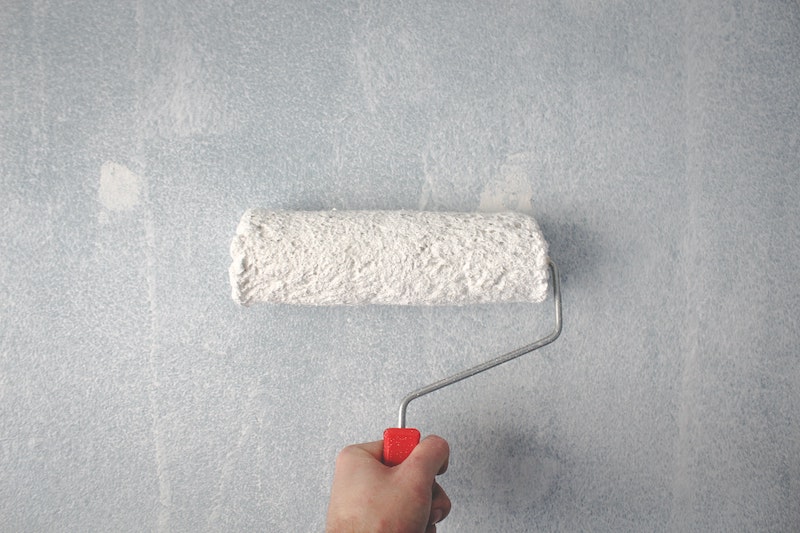
The ultimate way to spruce up a home's exterior is to re-paint it. You do not have to change the colour if you do not wish to, but a fresh lick of paint is a sure way to make a massive improvement and increase curb appeal.
You can bring in a professional painter to complete the job, or you can do it one weekend yourself - very easily. Of course, it will be cheaper to do it yourself, so if you are on a budget this may be the better option.
Keep the garden maintained
Doing things like making sure the lawn is mown and the plants are alive can be make a huge difference – so make it your mission to keep on top of garden maintenance.
Depending on where you live and how much sunlight your garden gets, you should find yourself mowing the garden at least once a week during the warmer months. However, during autumn and spring, once every other week should do the job.
Keeping the garden maintained will raise your homes value, curb appeal and will take no time at all – it can also be very enjoyable!
Improve or add to your porch
The overall look of the house is somewhat dependant on the look of the porch, if you have one. The way it looks is extremely vital in creating overall feel of the outside of you home. Your porch, like a front door, will be seen by everyone who passes by, and those who visit, and those who will walk through it.
If you do not have a porch, consider adding one to your property. Adding a porch can add a lot of character to your home, character that may be lacking from the outside of the property, It will also add value to your home as it is a bonus that it can have functional storage qualities!
Additionally, it may be worth considering adding a porch to your home if it does not have a hallway, but rather your home opens up straight into a living area. Adding the porch then will be sure to create the illusion of more space and provide storage.
Everything You Need to Know about Snagging Surveys
Why are snagging surveys so important before moving into a new-build home? How much does a snagging survey cost? Can you do it yourself? Discover the ins-and-outs of snagging surveys below.
Buying a new-build home is exciting. With a modern kitchen, living room and the latest appliances, people are easily swept away by the newness of it all. But don't let the modernity of your new home blind you. Even the newest of homes come with issues, which nobody wants to open to their eyes to only after they have moved in.
What is a snagging survey?
When acquiring a new-build, you are entitled for any issues with the property to be repaired free of charge by its developers. This is good news and can save you a great deal of money. But to take advantage of this, you first need to identify the property's existing problems. This is why one of the most important things to do when moving into a newly built home is to contract a surveyor to inspect everything from doors not closing properly and bad finishes to severe structural issues - this is known as a snagging survey.

Snag: A) A tree or branch embedded in a lake or stream bed and constituting a hazard to navigation. B) A rough sharp or jagged projecting part. (Oxford Dictionary)
In line with the dictionary definition of 'snag', a snagging survey sheds light on the 'rough' edges or hazardous issues that could become problematic in your future home. Because the majority of issues with new-builds are and-property/new-build-homes/snagging-surveys-apxu15x04s1j">cosmetic and/or easily fixed, a traditional survey can be a little excessive, and this is where snagging surveys come in.
When should I conduct a snagging survey?
Ideally, a snagging survey should be conducted before completion. This way, if any existing issues with the property are identified, they can quickly be rectified by the developers before your legal agreement to buy the property is cemented, and before you move in.
Sometimes developers don’t allow snagging surveys until after completion. This is OK, as long as you book it soon after you move into the property. You can contract a snagging survey any time within two years of completion, and the developer will be obligated to repair any outstanding problems.
What happens during a snagging survey?
During a snagging survey, the surveyor will inspect your property, examining the doors, walls, windows and fittings. Next, the surveyor writes up a report, handing it directly to the developer to speed up the process. The developer then must repair any problematic findings within an agreed time period.
After the snagging survey...
Some problems only crop up after living in a property for some time. We recommend that you continually update a list of any issues that you come across, which you can submit to the developer within two years of your move-in date for free-of-charge repairs. Remember to be cautious and include the small things too.
How much do snagging surveys cost?
A snagging survey typically can cost between £300 and £600, depending on the size of your new property and your surveyor. Some surveyors’ expertise lie in new-build homes, which is something to look out for when comparing quotes.
Can I conduct a snagging survey myself?
It is important to hire a professional surveyor to conduct your snagging survey. This can save you from a costly situation in which underlying issues surface after your property's warranty period.
Without specialist knowledge, you will need to take on a great deal of research to make sure you don’t miss any issues with the property. This can prolong the process and add to the stress of moving home. In addition, big issues like subsidence or other structural issues may be difficult to diagnose early on and aren't immediately obvious to the untrained eye. These are the problems you will want to catch early on to avoid large expenses later down the line.
For this reason, if you are looking to save money and conduct the survey yourself, we advise you to reconsider. However, if you do choose to avoid the professional snagging survey, make sure you thoroughly research the subject and compile a checklist of points to examine in greater detail.
When carrying out the survey, take your time and err on the side of caution. If something looks like it might be a snag or problem, include it on your snagging list, even if you aren't 100% sure. Snags can be reported at a later date, but it's best to be as thorough as possible from the start. Make sure you only conduct your survey after the building work is complete.
What happens something is missed in the snagging survey?
After two years of living in your newly built home, you realise there is a major structural issue. Don’t fret. You can make a claim under the the 10-year NHBC warranty. This covers building defects on new-build homes. The organisation also provides a resolution service that you can use if you have a dispute with your developer over problems with your property.
I have moved in and haven’t had a snagging survey…
If you are within two years of your moving in date, you can still conduct a snagging survey and the developer will be obligated to repair any defects free of charge.
To find out more about snagging surveys, or any aspect of surveying for new-build properties, contact us.
If you're considering buying a new-build property and want advice on bridging loan options check out our blogs for more advice.
What if my house-builder refuses to fix the defects?
Developers are responsible for repairing any defects resulting from their failure to build in line with the standards set out by their warranty and insurance provider.
However, in some areas, the guidelines can be subjective, and when you may consider something to be a fault, the housebuilder may argue it is not. Most of the time, it is about negotiating and compromising. Decide what you are not happy with and which issues you are able to fix yourself.
Keeping things amicable with the house-builder will ease the the process. But if there is a breakdown in communication between you and your developer, your warranty provider can offer a resolution service free of charge.
For more information on buying new-builds under short notice, read about our bridging loans here.
Avoid These 10 Common Interior Design Mistakes
Many people find that decorating their home is a tougher job than initially scoped out for. To make your life a little easier, avoid these ten mistakes that newbies to interior design often make.
1. Designing a showroom, not a home
With inspiration from the latest design magazines, we can easily find ourselves designing our homes to look uniform and showroom-esque. This can come off as a little lacklustre. To give your modern home character, think about scale and proportion when selecting your furniture. Furniture of different shapes and sizes can add dimension to a space. Lay out furniture pieces in varied scales and proportions. For example, try to have your coffee table at a different height to the couches that are around it. Using scale and proportion in a clever way can positively transform the look and feel of your home.
2. Using black in small spaces
Using black in a confined space often visually shrinks the area and makes it look even more cramped. Walls in black or dark hues as well as and bulky black furniture are the poor options when working with a home that has limited space.
Choosing lighter colours, fabrics, furniture and upholstery will improve the perceived size of smaller rooms. If you do want to add black for a touch of elegance, accent a white living room with subtle but effective accessories; a black table, a black throw on a white sofa, or a black plant pot on a window sill.
3. Getting the lighting wrong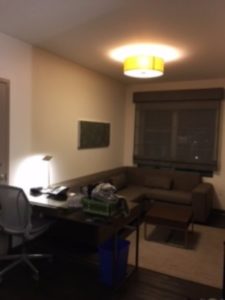
Few things make a room feel dated like bad lighting. Good lighting can make a room more welcoming and dramatically improve its atmosphere. As well as making it easier to see, bright lighting can make a space feel livelier. Read here for some great tips on choosing the best lighting for every room of the house.
To brighten up a living room, choose and layer different lighting for each seating area, such as spotlights, reading lights and floor lamps. Ambient lighting from floor lamps and table lamps can also be a nice touch.
Another way of bringing a room to life is by replacing outdated lights with statement lighting – a standout feature that doesn’t take much work to implement.
4. Matching everything
Opting for a colour theme is a good idea, but as the famous quote goes: everything in moderation. Matching walls, furniture, curtains, accessories and carpet can be excessive and give off a bland show-room effect. A range of colours and textures can add character to a room and make a space look and feel complete.
5. Artwork overdose
Walls filled to the brim with art work make a room look crowded. Instead of many cramming frames onto your living room wall, choose a single statement piece and show off the space around it. Another tip is to hang paintings and prints at eye level. Artwork hung too high or low can throw a room off balance.
6. Bad rug positioning
When you’re working with an open floor plan, a rugs can be great features to define and separate different spaces.
It may be something that people don't think about too much, but there is actually a science to placing rugs in an aesthetically-pleasing position. Here are a few pointers on how to position rugs:
- Evenly position a rug between the sofas it sits between
- In a large, open space, place your rug underneath the front legs of each sofa
- When placing a rug underneath a dining table, make sure that when you pull out the chairs, they stay on the rug
- In the bedroom, anchor a rug subtly at the foot of the bed
7. Clutter on show
As more new city developments pop up, multipurpose rooms are becoming more and more popular as space in these homes is often limited. To create a well-designed multipurpose room, make sure there is a designated area for each type of space, for example, study and living room area. This is key to avoiding a ‘junk room’ effect. Try to minimise clutter in these areas and use them for your set purpose solely.
Whenever using open shelving, source aesthetically pleasing or interesting objects and space them out evenly. Hidden storage on the other hand is great for unsightly belongings.
8. Getting the curtains wrong
A well-designed room with poorly hung curtains can cheapen a room and stand out in an unpleasant way.
Some of the biggest mistakes in this domain include hanging curtains at the wrong height for a set of windows and the ceiling height, as well as curtains that are too short or long. Too high and they look cheap, too low and they look careless. To achieve a finished look, drapes should barely kiss the floor or have a slight break in the fabric.
To look luxurious, curtains need body. This means they need adequate fabric meterage, which gives a fullness to the way they hang. To achieve the look:
- Use two to three times as much fabric width as the width of the curtain track or rod.
- Use a separate panel of lining attached to the back of the curtain.
This gives the curtains body and helps them to ‘float’.
9. Buying furniture you’re not mad about
You may be in a rush to furnish your new home in time for your move-in date or house-warming party. But in the long-run, it will help to be patient, do your research and find those pieces that you'll truly enjoy - at the right price!
Haven't found your dream furniture yet? Consider purchasing some cheaper furniture from Ikea to tie you over until you're ready to make big purchases.
10. Test out the paint!
Testing out paint colours can save you a great deal of time and money. Paint tin colours somehow can look very different once on your living room walls. In addition, paint colours can vary in different shades of light. We recommend to buy some trial colours in similar hues - at least one shade darker and one shade lighter - and paint it on a large spot in the room of choice.
Another option is to paint directly on a large piece of the cardboard, which you can then move from room to room to decide whether the colour is suitable. This may lead you to be better informed and make better decisions: instead of a the magnolia colour you chose for the dining room, an off white would do a lot more for the space.
If you are looking into property development finance, check out more of our blog posts and guides for more useful tips and tricks.
7 Ways to Negotiate a Better House Price
After too many property viewings, you’ve finally found the place that you’re excited to live in.
But finding your ideal property is only half of the work. The next step is to negotiate a great price for your new home. How can you make sure you’re getting a good deal when you make an offer? The asking price may be within your budget, but you still want to make sure you’re getting the best price possible. How do you go about bidding for it?
It can be stressful deciding whether to clinch your ideal home immediately with a full price offer – or to put in a lower offer and potentially save thousands of pounds but risk losing the property to a more enthusiastic buyer.
To purchase your desired property at the best price - even if you’re not a natural negotiator - consider the following tactics:
Acquire a mortgage in principle
When you’ve shown interest in a property, estate agents and sellers will take your offer more seriously if you have a mortgage in principle, as this proves you can afford the property.
What is a mortgage in principle? This is when you’ve been accepted for a mortgage before finding a property. Once your application is accepted by a lender, they will inform you how much they propose to lend you. This boosts your negotiating position, as sellers are more likely to accept offers from buyers with a mortgage in principle.
Remember to compare mortgage deals before you choose to apply for one, so that you’re confident you’re receiving the best rate for your personal circumstances:
- Compare residential mortgages if you are buying a home to live in yourself
- Compare buy to let mortgages if you are buying an investment property
- A mortgage broker can help you choose which is best-suited for you and speed up the application process
Research, research, research
To enhance your negotiating position, it is important to learn how long a property has been on the market and if there have been many other viewings and offers. You can find out when a property was first listed on an estate agents website, or on Zoopla or Rightmove. If you gauge that interest has been low, you can take greater comfort in offering a lower price when you start the negotiations – if a property has sat on the market for several months, the seller may be more willing to lower their asking price.
Another way to feel more at ease with the price of a property is to get property valuation from a chartered surveyor or valuer. Although this service comes with a fee (varying from £300 to £600), if a surveyor evaluates the property as less than its offer price, you will have greater bargaining power.
Research other properties in the area
Knowing the asking price of similar properties in the same area is vital for your negotiations. You can learn about current average property prices through your estate agent’s website, but also easily through property websites such as Zoopla and Rightmove.
If properties for sale in the same area with similar features are asking for a higher price, the owners may be in a hurry to get the property off their hands. On the other hand, if similar properties in the area are asking for less than your chosen property, you may have a strong case for a lower offer. (And if nicer or bigger properties in the same area are being offered at the same price, consider whether they will make better investments than your chosen property.)
If you think the property is overpriced mention it to the estate agent - they may feed this back to the owners, who may decide to drop the price.
Thoroughly assess the property
Often people view a property and immediately know it is just right for them. However, try not to let the excitement of finding your perfect property cloud your judgement and weaken your negotiation power.
By conducting an in-depth inspection of a property – inside and out, you may find many opportunities to reduce the offer price. It’s important find out whether you are likely to incur any major expenses in the future due to the current state of the property. When was the boiler last serviced? When was the roof last repaired? Do parts of the property need to be decorated?
If costly work is needed, you have a solid reason to put in a lower bid. One way of doing this is to estimate the cost of any work needed and subtract this value from your offer price.
Endorse yourself
In the eyes of sellers and estate agents, some buyers are more attractive than others. First time buyers, those paying in cash and buyers who have already sold their home are more appealing than another buyer who may have made a higher offer, but is stuck waiting in a property chain.
Show your estate agent you are a desirable buyer and you will find yourself in a better position to haggle over the asking price.
Look out for energy efficiency
All landlords and sellers must issue an Energy Performance Certificate (EPC) to inform buyers and tenants of the energy efficiency levels of a property. This will enable your determine and compare the relative financial running costs of renting your property.
EPCs can be useful bargaining chips. If a property has an old boiler, single glazed windows, electric heaters in the bedrooms, and is only half as energy efficient as it could be, you could ask for the costs of improving energy efficiency to be factored into the sale price.
Indicate interest in another property
Estate agents often exaggerate the market’s interest in a property in attempt to create a sense of urgency in the buyer, and put in a higher offer more quickly. Indicating that you are deciding between a couple of other potential properties may make the seller/estate agent more amenable to reducing their asking price.
Start with a low offer
You may need to put in a lower offer in order to deduce a seller’s bottom line. Put in an offer below what you are actually willing to pay. You can increase your offer at a later date, which will seem more attractive to the seller. Explain your offer: state exactly what work the house needs and how much it will cost
Consider these extra costs
Before you put in your offer, find out how much buying your house will cost you. Costs can surmount tens of thousands when taking into account legal and valuation fees, surveys and stamp duty. You could also ask the seller to include curtains, appliances and furniture to be included in the offer, to bring down your set up costs after the purchase.
For information about buying a property through bridging loans in London, check out more of our blog posts and guides.
The Best Ways to Decorate a Rental Property
Young people these days in the UK are increasingly becoming synonymous with a rather depressing millennial-defining name: generation rent. This refers to the fact young adults are being pushed towards renting accommodation as a result of astronomically high house prices, a meagre growth in real incomes and tighter lending policies being offered by banks. A study conducted by the thinktank Resolution Foundation has shown that barely half of all UK families in Britain own their own home, highlighting the difficulties young adults face, whilst the rate of property-owning has been declining since 2002.
Think those statistics sound dismal? Wait till you hear about renting in London. Research from PwC has shown that by 2025, only 40% will own their own home, with city dwellers becoming predominantly renters. In comparison, 60% of Londoners owned their property in 2000.
Evidently, a profound change has taken place, and some might say a dreary one, but it doesn't have to be viewed that way necessarily. When people think about one of the fundamental perks of buying a home, it is likely high up on that list will be something to do with the freedom to decorate in whichever way you choose.
However, if getting onto the property ladder doesn't seem too likely to you in the not too distant future - fear not! Hope is far from lost.
In fact, there are many different ways you can inject a little bit of your personality into the place where you are renting, without having to fret about causing irrevocable damage and never seeing the light of day of that hard-earned deposit.
We should add though that it is also worth asking your landlord before expecting the worst on making alterations: some don't mind if you repaint a room, add a bit of wallpaper or add a couple of shelves, provided that you return the property in its original state when leaving for good.
Still, even if this isn't possible, there are plenty of options available to you. We've had a little peruse online for some clever and creative ways you can decorate your rental property, and gathered only the very best:
- Invest in lighting
- Wallpaper stickers
- Plants
- Flowers
- Pictures and postcards
- Wall tapestry
- Bookcases
- Soft furnishings
Invest in lighting

Harsh lighting hardly gives a welcoming homely vibe to a property, so if you want to make some speedy changes to your home, investing in some table or standing lamps, or fairy lights is a great way to start.
Wallpaper stickers
Yes, it is possible to customise your walls without damaging them, or making a hefty dent in your deposit! Have you thought about trying contact paper in your home? There are a myriad of things you can do with it - Pinterest is an excellent place to look if you are feeling thrift of inspiration. These wall stickers are removable, and another way in which you can add a bit of personality to your rental property. We love these chalkboard wall stickers from notonthehighstreet.com.
Plants
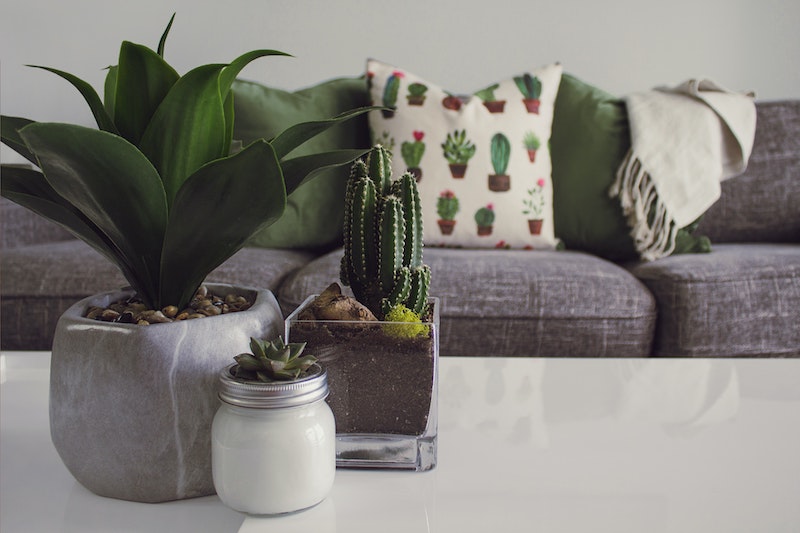
Buying some plants or succulents is a quick and relatively inexpensive way to update your home and add a little personality, why not change things up a little?
Flowers
In a similar vein, flowers can add a splash of colour (and a bit of oxygen) to a dull living room or bedroom. If buying flowers regularly seems like it could end up a bit of a costly affair, why not buy a batch of fake flowers to supplement them and get an almost the same effect? And there are plenty of things you can do with them - why not put them in a little glass jar, or turn them into floral wallpaper hangings?
Pictures and postcards

So, perhaps your landlord won't allow you to paint the walls a lurid green, but, you can still add some colour to them! Why not hang a few painting up, using various sizes so you can frame a few postcards too? If you are a bit scared of drilling a few holes into the wall (and who can blame you) then why not prop the frames on a bookshelf or mantelpiece?
Buying artwork or posters for your home doesn't have to be an expensive investment: try scouring local charity shops for some bargains, browse eBay and Amazon.
Wall tapestry
Want to make a statement? Hanging a wall tapestry should do just the trick! We like this intricately detailed, fringed tapestry available at Urban Outfitters at £45.
Bookcases

Don't underestimate the power of a humble bookcase! If you are a serial renter, bookcases are your friend. Fairly easy to put together, and a fantastic storage option if you aren't able to put shelves up. You could also use a bookcase to pop a few frames onto if similarly, you are limited in terms of hanging pictures on your wall, turn into an eye-catching display and add some succulents too!
And who says that bookcases have to be limited to your living room or bedroom? Why not use one for storing ingredients from the kitchen? Get creative! You could even use a bookcase as a room divider, the options are endless.
Soft furnishings
If you are feeling restricted in your ability to add some character to your house, why not invest in some cosy throws, blankets or cushions? It's a practical way to add a bit of textural detail and colour to your interior and to snuggle up in comfort during these next few cold wintry months. For ideas, we really like the home collection Liberty has to offer this season.
As you can see, there are numerous ways in which you can decorate your rental property. It may require a little bit more time and creative thinking to consider the options than if you had your own property, and with a few ideas you may have to pick up the phone and contact your landlord, but it will be time well spent. There is absolutely no reason why you can't add your own style to your home, rented or not!
The 8 Most Common Mistakes When Buying a Home
Buying a home is one of the biggest purchases you may ever make. But surprisingly, people take a mere 25 minutes on average when viewing a new home before deciding it's the one for them.
Many people soon regret their fast decisions and going with their gut about a house they initially liked, when they later experience costly and time consuming problems. If only they queried that old boiler before making the purchase, they could have saved thousands of pounds in plumbing fees.
The most common mistakes when buying a home mostly happen because people don’t ask the right questions when viewing a property. This checklist will help you make sure the house you’re interested in really is best-suited for your needs.

1. Is there damp?
Living in a property with damp can be costly, not to mention bad for your health. Damp occurs as a result of moulds, which produce allergens irritants and even toxic substances. Inhaling or touching mould spores may cause an allergic reaction, such as sneezing, a runny nose, red eyes and skin rash. Moulds can also cause asthma attacks
The worse the mould is, the higher the price to remove and repair any damage. To learn more about the costs of eliminating damp, this Which Guide is full of useful tips. The main signs of mould/damp are a mouldy smell, flaky plaster, and watermarked walls or ceilings.
2. Does the house face north or south?
A north- or south-facing house can make all the difference to the atmosphere in your home. Although during winter or on a cloudy day it can be difficult to tell apart a north or south-facing house, in the summer it makes all the difference.
In winter, during a cloudy day or at night, it is difficult to tell the difference between a north and south facing house or garden – but in summer it can make the difference.
A south-facing garden gets all of the sun and a north-facing garden will normally be blocked by the shadow of your house.
3. Is the property adequately sound-proofed?
Noisy neighbours are not something you want to consider putting up with once you’ve moved into your new home. If the sellers have the radio or television on ask for it to be turned down to ensure that you can’t hear your neighbours’ every word.
If your property is near a train station or busy road, consider whether you’ll be able to sleep peacefully if the sound of oncoming traffic is within hearing distance.
4. Is the plumbing up to scratch?
Plumbing is one of the most important aspects to examine before buying a house. It’s your job as the buyer to uncover any potentially serious and expensive problems that aren’t always apparent.
Make sure to inspect the boiler. An old, inefficient boiler could cost you more money than you’d planned on both water and heating bills. So, don’t be afraid to ask when the boiler was fitted – if it is over 10 years old, it’s efficiency is likely to be 30% less than what you’d hope for. If the hot water tank is situated in the roof it is most likely an old one, and may have to be replaced soon.
Remember to check taps in the kitchen, bathroom, toilet and shower. They should be in good condition and leak-free. Are the radiators in working order?
There are many aspects to consider from a plumbing point of view. This is why having a plumber survey the property before purchase is fundamental, and could save you a great deal of time in addition to expenses running into thousands of pounds.
5. Is the building structure in good shape?
Walk around the outside of the house to check its exterior. Can you spot any damp or cracks in the walls? Are there loose tiles on the roof and broken guttering? If you spot any of these warning signs, find out what the cause is and whether the seller will carry out repairs before your big purchase.
If your offer is accepted, make sure to get an independent house survey so that a qualified expert can thoroughly assess the property.
6. Is the roof problem-free?
The roof is one of the most expensive features of a property, so it’s important to give it a good inspection. You can start by assessing the roof from a distance. Firstly, check that it’s free of mould, that it’s flat and there are no unusual edges or bulges. Are there any worn-out spots or are there shingles missing? These are usually indications that the roof is old. We recommend asking the homeowner about the roof’s materials and lifespan.
Roofs are frequently built with materials ranging from composite shingles, metal, tin, rubber or cedar shingles. Why is this important? A roof made from composite shingles helps the roof last for a longer time with minimal difficulties, while other common materials may require inspection and maintenance annually.
7. Is there enough storage space?
Storage space is an important factor that can often be overlooked when viewing a house. Are there cupboards to keep your hoover, towels, books and boxes of junk? If not, is there space for storage units to be fitted? Storage space can be scarce, especially in new builds, so make sure to keep this in mind when viewing your next potential house.
8. Is it your kind of neighbourhood?
You can get a good feel for a neighbourhood by walking and driving through nearby streets. It’s worth doing this both during daylight hours and at night time to assess things like traffic, noise and personal safety.
Other questions worth considering include:
- Is public transport within walking distance?
- Are there busy/noisy roads or train tracks nearby?
- Is there pubs, bars or restaurants nearby that will disturb your sleep at night?
- Can you walk to a grocery store for a pint of milk, or do you have to drive?
- Does the property rest underneath a flight path?
- Are there big trees growing nearby that could potentially cause subsidence problems?
- Will you need a permit to park there?
- Is it difficult to find parking if you don’t have off-street parking or a garage?
It is important to meticulously assess a potential new home before you make the purchase. Once you're serious about a property, hire a professional to inspect the home and give you an objective assessment. Repairs should be completed before you move into your new house to avoid future problems.
For information about buying a property through bridging or auction finance, please enjoy our blog posts and useful guides.
